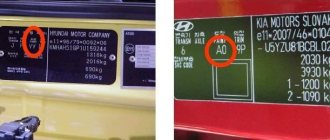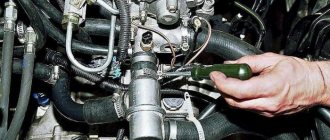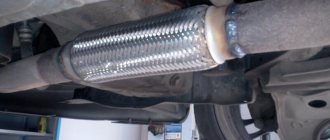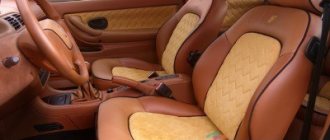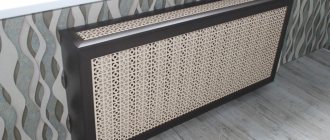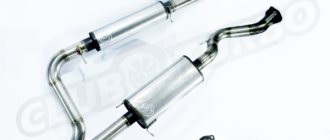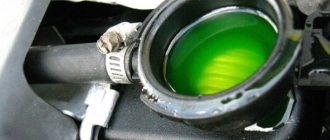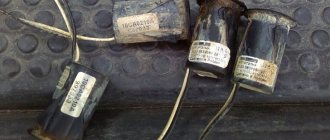Selecting a location
The presence of two or more units of climate control equipment requires a choice of location for each of them. Before starting installation work, you will need accompanying documentation.
Do I need permission to install an air conditioner?
Structurally, the air conditioner is a system with an indoor and outdoor unit, which is mounted on the facade.
Multi-storey building, on the basis of Art. 246 of the Civil Code is common property with the right of disposal by all owners. Installation of equipment without approval is a violation:
- the device makes noise, buzzes, disturbing the peace of the neighbors;
- condensation can damage the façade of the building or get onto the balcony below;
- the overall block blocks the view or view and windows;
- There are risks of wall cracking, wiring shorting and fire.
Based on paragraph 1 of Art. 25 LCD installation of a split system is considered as a reconstruction or re-equipment of the premises. Clause 3.5.8 of Resolution No. 170 states that it is prohibited to install an air conditioner without permission from the management company and neighbors. Consent or refusal can only be obtained after a meeting of the residents of the house.
Important! Residents of private homes can begin installation immediately after purchasing the device.
Permission is required if:
- installation work is carried out on the front part of the high-rise building;
- the user lives in a house that is valuable from a historical and cultural point of view;
- the split system is located above the pedestrian paths;
- There are no special fences on the window opening where the block is located.
Important! The management company does not have the right to remove air conditioners. Art. 330 of the Criminal Code considers such actions as arbitrariness. Dismantling of devices is carried out only by court order.
Choosing a location for the indoor unit
Installation of the internal air conditioner module is carried out with your own hands so that cold air flows do not cause discomfort. It can be placed above the head of the sofa, on the side and behind the workplace. Construction regulations define the order of location of the indoor unit:
- from the structure to the ceiling - at least 15 cm;
- from the module to the right or left wall - at least 30 cm;
- from the block to the floor - 280 cm, but for apartments on the ground floor, the external block is mounted at the same level or lower than the internal one;
- from obstacles to the movement of air flows - no less than 150 cm;
Advice! In a room with a sofa and TV, it is better to place the air conditioner above the sofa.
Where to locate the outdoor unit?
The outdoor module is placed near a window opening or on an open loggia. If the balcony is glazed, the block is placed on a fence with good load-bearing capacity or on the facade. Residents of the 1-2 floors need to determine a place for the outdoor module as far as possible from passers-by. On the 3rd or more floors, it is allowed to place the device under a window or on the side.
In a private house, the outdoor unit is placed on a wall with high load-bearing capacity. On ventilated facades, a special fastening is organized or the block is placed on the plinth.
Determining the distance between blocks
The maximum length of the intermodule route is 6 m; if it is exceeded, additional freon injection will be required. If the external and internal modules are placed at a distance of 1 m, the route should not exceed 5 m. The excess of the system is formed into a ring and placed behind the block.
Interesting to know! Manufacturers indicate different maximum distances between blocks. For Daikin equipment it is 1.5-2.5 m, for Panasonic - 3 m.
Air conditioning in a car - profitable or expensive?
Air conditioning in a car is an element of comfort for some, but for others it is excess gasoline burned. Why install an expensive air conditioner if there is free air outside the window? But again, according to many, driving with the windows open increases gas mileage, and over time it will be more expensive than installing an “expensive” air conditioner. Is it so?
Installing an air conditioner in a car is easy. The service will cost approximately 25 thousand rubles. Plus refilling the air conditioner here: https://servis43.ru/zapravka-konditsionera-avto.html. Overall, it's a decent amount of money. But some craftsmen manage to install a home air conditioner in the cabin, which does not depend on the engine, which means it saves fuel. In this article, we'll take a closer look at how car air conditioning and open windows affect fuel consumption.
The compressor of a conventional car air conditioner is driven by the engine, which increases fuel consumption by 1-2 liters. When the windows are open, air resistance disrupts the aerodynamics of the car and also increases fuel consumption.
In 1921, German engineer Paul Jary patented the world's first streamlined car. He believed that this body shape gives an undeniable advantage on the road. And he turned out to be right. The first aerodynamic body appeared already in 1922. The car has become more dynamic, more economical and quieter.
Testing at different speeds with the windows open and with air conditioning gave the following results.
With the windows closed and the cooling turned off, the car consumed an average of 11.4 liters per 100 km. At speeds up to 100 km/h with air conditioning, consumption increased by 1 liter. Opening the windows at this speed had almost no effect on consumption. However, there was noise when the windows were open. As is known, the noise level affects fatigue and reduces the driver’s response, especially on a long journey. According to GOST, the noise level in the driver's seat should not exceed 80 dB.
With the windows closed at a speed of 40 km/h it was an acceptable 65 dB, but when the speedometer needle reached 100 km/h, the noise level with the windows closed increased and was already an acceptable 75 dB.
With the windows open at a speed of 100 km/h, the noise level was 85 dB, and each passing truck adds another 10 dB. What are the results of fuel consumption?
At maximum city speed they were almost equal. With air conditioning in the car, fuel consumption increased by 0.6 liters, and open windows added only 0.5 liters.
But after 80 km/h the opposite happened. The influence of the air conditioner in the car became almost unnoticeable. At a speed of 100 km/h, only 0.3 liters more were consumed, while with the windows open, the engine's appetite increased by almost 3 liters.
So, the conclusion. Do you want to save money? Open windows only at low speeds on short trips around town. But on the highway you won’t be able to save gas that way. It's better to turn on the air conditioning in your car. It’s both more comfortable and the driver is less tired of the noise.
It is generally better for owners of small cars to turn off the air conditioning on inclines; it takes up to 25% of engine power. Remember to check the refrigerant pressure in the system at least once a year. Regularly change the cabin filter and treat the air ducts with antibacterial compounds in the cabin ventilation system, and the air conditioner in your car will allow you to breathe easily, deeply and safely!
SIMILAR ARTICLES:
Windshield washer fluid
The radio on the Skoda Octavia is broken: possible solutions
Is it advisable to buy tires from a domestic manufacturer?
Buying used winter tires: pros and cons
Nokian tires are high quality products at an affordable price!
Professional recommendations for choosing an oil filter for a car…
Parking sensors - a necessity or a luxury?
Pulleys: their types and applications
The whole truth about glass defrosting products?
Buying car covers: advice from experienced motorists
Maxxis passenger tires are a strong argument in favor of Chinese quality!
Choosing winter tires: what to look for
What should you consider when choosing car tires?
Hankook tires are a great choice!
Winter car snow brushes as an essential item
TOP 10 most popular winter studded tires
What are the advantages of Replica Kia wheels?
What to look for when choosing a car battery
What you need for installation
Consistent installation of a good split system when doing it yourself should be carried out taking into account ease of access during maintenance and ergonomic criteria - cold air should not have direct access to resting and working areas.
Approximate layout of split systems
The appropriate layout for installing a new air conditioner depends on the type of unit. The indoor module can be hung:
- to the left of the outside. The track is flat, the block is located 0.5 m from the wall. When turning the line onto an adjacent wall, the distance can be reduced to 0.1 m. The output and the route are masked under the cover of the equipment;
- to the left of the external wall without cable laying on the facade. Communications are laid in the corner of the room and hidden in a box. They hide him under the curtain;
- to the right of the outer wall. A typical solution involves laying the route in a box from the wall or laying it in a groove.
Advice! Use the groove laying technology if there is a ban on laying the route on the facade.
The outdoor unit can be positioned:
- on the loggia or balcony. The module is fixed frontally or sideways for ease of maintenance;
- on the glazed balcony. The window sash should be above the air conditioner. To prevent snow, moisture or debris from getting on the block, install a visor and plastic;
- under the window. This option is suitable for rooms without a balcony;
- next to the window. The block is placed at the level of the bottom of the window.
Equipment
When installing climate control equipment yourself, you will need:
- perforator for making through holes for the output of pipes, cables, drainage pipes;
- a pipe cutter with a sharp blade or a hacksaw for metal;
- file and rimmer for trimming nicks;
- a pipe bender or a special spring for forming copper pipes;
- a drill with drills of different diameters to make holes for the mounting plates;
- pipe calibrator and flarer;
- wall chaser, which can be replaced with a chisel, sledgehammer and hammer;
- vacuum pump to start the air conditioning system;
- screwdrivers, hex wrenches, level.
Preparing equipment for refilling the air conditioner
To check the pressure in the system and then refill the car air conditioner, you need to purchase a metrology station, hoses, an adapter with a tap that allows you to connect it to the system, and a refrigerant cylinder of the appropriate type (R-12 or R-134a). There are ready-made kits for refilling car air conditioners yourself.
- At the top of the freon cylinder there is a thread and a plane that the needle will pierce when connecting the adapter.
- If the refill kit does not include an adapter with a tap, it can be purchased separately.
- Screw the adapter to the cylinder and connect the hose to it.
- The other end of the hose is connected to the metrology station. You also need to connect a second hose to it. The equipment for refilling the air conditioner has been assembled.
Basic rules for installing and connecting an air conditioner
Installation and connection of a household air conditioner when doing it yourself requires compliance with a number of requirements.
Rules for installing the outdoor unit
The module is configured as follows:
- Testing a balcony or facade for strength is 2 times more equipment, which weighs from 10-15 to 40 kg.
- Inspection of brackets on external insulation - they must be hidden in the wall material.
- Laying a damping seal on a ventilated facade or aerated concrete walls.
- Taking into account equipment noise - the maximum permissible level is from 25 to 30 dB.
- Check for distortions at each stage of installation to prevent refrigerant leakage.
- Installation in a windy area with a canopy for protection from bad weather.
- Maintain a line distance of 15-20 cm if the equipment is located on the roof.
- Connecting the condensate collection pipe to the sewer.
Important! The distance from the outdoor unit to the wall surface is at least 10 cm.
Rules for installing the indoor unit
A second module is installed in the room and a line is laid:
- Connection to the electrical network with the organization of an individual line - the energy consumption of the air conditioner is 2 kW.
- Laying the main line externally (hidden in a box) or internally (hidden in a wall) methods.
- Maintain a distance between blocks of a maximum of 6 m for efficient operation of the structure.
- Removing household appliances, curtains from the device by 3 m.
- The air conditioner is not located above radiators or furniture.
- Maintain a distance of 20-25 cm from the block to the ceiling.
Important! The indoor unit is mounted on the wall or ceiling.
Installing an air conditioner yourself
Correct installation of a powerful split system will be done with high quality by yourself if you follow the sequential work instructions.
Installation of the indoor unit
The internal module or hair dryer is installed immediately. Installation activities include:
- Taking measurements from the device.
- Place the steel mounting frame on the wall strictly horizontally, checking with a level.
- Marking the points where the fasteners will be.
- Making holes in the wall with a hammer drill.
- Fixing plastic dowels with a hammer.
- Attaching the mounting panel to the wall and fixing it with self-tapping screws.
- Hanging the hair dryer on a special plate and checking that it is horizontal.
Important! If there are distortions, there is a risk of condensation accumulating on the pallet and flowing onto the walls.
Laying a communication line
Experts advise users who do not know how to properly connect a household air conditioner without making mistakes with their own hands, to start by preparing the main channels.
Electrical connections
Holes
It is better to carry out the work together:
- in block houses, the locations for laying reinforcement are determined so as not to harm the load-bearing walls;
- the assistant should be below and report on the installation;
- holes are drilled using a hammer drill;
- for houses without thermal insulation, the diameter is 50-60 mm, for thermally insulated buildings - at least 80 mm.
After preparing the holes, you need to install the brackets.
Pipelines
For preparation and installation you will need:
- Cut the copper pipe with a margin of 1 m for bends.
- After cutting, carefully bend the product without kinks, observing the maximum radius of 10 cm.
- Place flex thermal insulation on the tubes - polyurethane foam hoses. Foam rubber should not be used due to rapid wear.
- Place special flanges on the end of the pipe with threads.
- Flare the ends of the tubes.
- Connect the pipeline, cold and hot fittings one by one, checking their diameter.
- Tighten the fitting flange firmly, but not too tightly.
- Make a drainage channel from a section of reinforced plastic pipe, connecting it to the drain with a flange or heat-shrinkable pipe.
- Make a solder by working the soldering iron in a circle.
Important! If the pipes are severely bent, the refrigerant will move unevenly, increasing electricity consumption.
Outdoor unit installation
The external module of the split system weighs more than 20 kg due to the compressor. Work at height is carried out with the involvement of 1-2 people:
- Marking is organized using a level.
- Holes are made using a hammer drill, taking into account the thermal insulation of the house.
- Anchor bolts are screwed into the holes.
- The brackets are screwed with a nut to the bolts.
- To reduce vibrations, rubber is placed under the feet of the outdoor module.
- The quality of the fasteners is checked and the external module is hung.
Important! If the outdoor module is installed on the 3rd floor or higher, it is advisable to contact industrial climbers.
Connecting system units
The blocks are connected through channels in the wall with the cable connected to terminals similar to the color of the main wiring. If the level difference between the modules is more than 5 m, a special loop is made to catch the oil. If the difference is smaller, the loop is not performed.
Drainage
Drainage channels are equipped with a discharge to the street or to the sewer. The pipes are connected as follows:
- A corrugation is pulled onto the outlet of the indoor unit (a plastic tube with a tip).
- The connection is secured with a clamp.
- A hose is attached to the outlet of the outdoor unit to remove moisture from the walls.
- When using a polymer pipe, an adapter is selected.
Drainage pipes must be laid with a slope. The maximum is 3 mm*1 m, the minimum is 1 mm*1 m.
Freon circulation system
Copper refrigerant tubes are bent using a pipe bender or a spring without sharp turns. The connection begins with the indoor unit - screw the nuts from the ports. As they weaken, the hissing of nitrogen is heard. After it stops, remove the plugs, remove the nuts, put them on the tube and begin rolling.
Rolling
After removing the plugs from the tubes:
- The evenness of the edges is checked.
- The jags are smoothed out with sandpaper.
- The cross section is adjusted using a calibrator and the edges are aligned by 5 cm.
- The extreme parts are flared for fastening at the inlet and outlet.
- During flaring, the edge of the pipe is directed downward and fixed with a 2 mm exit.
- The flaring cone is placed on the edge of the pipe and tightened with force.
- Rolling ends when the cone does not pass into the edge.
Common mistakes during air conditioner installation
With unprofessional installation, users can make a number of mistakes:
- laying pipes with kinks - increases the load on the compressor;
- installing an external unit on a balcony with glazing - normal air circulation is lost;
- location of the air conditioner next to welding machines;
- uneven arrangement of blocks - condensation begins to flow onto the floor;
- choosing equipment that does not have an auto-defrost option - in heating mode, the external unit freezes.
For normal operation of the air conditioner, you need to regularly clean the filters and drainage channels. When overloaded, the system becomes noisy - the fan is unbalanced or the bearings wear out. These breakdowns should only be repaired by a specialist.
Adding oil when refilling the air conditioner
There is an opinion that when refilling the air conditioner you should always add oil. But excess lubricant often leads to breakdown of the piston compressor, since the oil, passing through the unit along with the gaseous refrigerant, will burn on its components.
It is better to use freon to refill the air conditioner, to which oil has already been added (photo on the left), since it is dosed there. If the lubricant is poured into the system separately, polyalkylene glycol oil - PAG should be used (photo on the right).
When filling the air conditioner with oil, you must follow the norm specified in the instructions for the specific air conditioner model. Oil must be poured into the compressor through the crankcase.
For all questions and purchasing consumables and equipment, please contact SMART SERVICE.Tula.
Top 5 tips from experts
- Automatic switches designed for boilers and washing machines are suitable for split systems.
- If the drainage pipes sag too much, condensation accumulates.
- If you have never done flaring before, practice on an unnecessary piece of pipe.
- It is better to carry out sealing together.
- After connecting the pipeline, you need to fill the holes with foam or fill them with silicone sealant.
No modern car can be imagined without an air conditioning system. Thanks to this device, the driver and passengers of the car can feel more comfortable in the summer heat. You can learn more about how car air conditioners are installed and how to choose equipment for your “iron horse” from this material.
Automatic stations
Today, there are several types of installations for refueling car air conditioners. For example, these can also be special stations - such installations, to which all the necessary adapters and cylinders are connected, are universal. A station for refilling car air conditioners can combine several types of installations, in other words, such systems can be used for diagnostics, refilling, and repair of the device. As a rule, in order to get rid of problems in the operation of air conditioning systems, you need special installations with cylinders, tools and hoses, which will allow you to diagnose and refill the system.
Using an automatic refueling station
Why use such a system, connecting to it all the necessary tools, cylinder and hoses? Because first of all, with its help you can make a diagnosis, which, if the causes are identified in a timely manner, will allow you to avoid expensive repairs. Agree, a visual inspection will not always allow you to accurately check the condition. To avoid repairs and identify all breakdowns and causes in time, you can use a special diagnostic tool. It is such a tool that will allow you to quickly identify areas of freon leaks and depressurization of the system, and accordingly, correctly repair the device.
If you need to identify a leak, your tool kit may also contain specialized dyes and an ultraviolet lamp. The dye is poured into the hoses of the system, freon is also charged from the cylinder, after which, using a UV lamp, the places where the refrigerant is escaping are identified.
If during the diagnostic process using tools you find that you do not need repairs, then after that you can proceed directly to the refueling process yourself. The system will allow you to connect a refrigerant cylinder to the device and charge it to the maximum. Remember that the Conder must always be refilled correctly, since a lack of freon can lead to the need to repair the compressor. Thanks to specialized stations, you can always correctly calculate the required volume of freon, which will allow the air conditioner to work correctly.
Selecting and purchasing equipment for your car
If you decide to install a condenser in a car, then first of all you need to read the service manual for the car. In particular, you must make sure that the design features of the vehicle allow the installation of additional devices. The specific type of air conditioning system, as well as its type, should be selected taking into account the power of the power unit. If you contact a specialized store, you will be provided with a catalog of air conditioners that corresponds to the technical specifications for a particular car.
Air conditioning system kit for Daewoo Lanos
In order for the installed condenser to work correctly, it is necessary to check its configuration before installation.
To ensure that installation of the device does not cause difficulties, the kit should contain everything that may be required, namely:
- compressor unit with drive belt;
- condenser device or radiator;
- evaporation unit;
- drying device - receiver;
- control node, in particular, a block;
- lines and hoses, sensors, valves and other elements, the number of which should be checked in accordance with the configuration;
- and, of course, the kit should include a service manual, which will contain all the recommendations regarding installation and cleaning of the device.
It is also important to understand the technical and design features of the vehicle. This is important because the location of the evaporation device in European and Japanese cars must be different. If you own a Japanese car, then in this case the evaporator unit is usually mounted under the dashboard. It should be noted that this option is simpler for the installer; the installation procedure will, in principle, be simpler.
If you are the owner of a European-made car, then you are unlikely to be able to quickly install a condenser. Typically, in such vehicles, the evaporator unit is mounted in the engine compartment. Accordingly, this location may cause difficulties when installing the device in a garage (the author of the video is Artem Ilyinov).
Popular opinion
There is an opinion that it is easier to sell a car and buy a similar one with air conditioning installed at the factory, because the volume of alterations is very large. But such an opportunity is not always available. Thus, a car may be purchased on credit and its sale may be difficult. Perhaps there is no desire to sell the car because it is completely satisfactory and is in excellent condition, or the model is very rare. In this case, the question arises about installing an air conditioner.
The first thing a potential installer client thinks about is whether it is possible to install an air conditioner on a car in principle. Most often the answer will be yes. The only question is the complexity of the procedure and its cost.
Theoretically, you can install air conditioning on absolutely any car.
It is also not easy to find qualified installers. There are not many companies involved not only in servicing, but also in installing air conditioners, and they mainly specialize in commercial vehicles.
Self-installation instructions
So how to install an air conditioner correctly? As stated above, first of all, you should carefully study the service instructions for the car; it should indicate all the working aspects of this process. There are a lot of nuances in the air conditioning system that need to be taken into account: oil, freon and its required weight in your system. Freon is blown into each car by weight.
Before installing the device and connecting all the lines, we would advise you to pre-assemble it in order to evaluate the dimensions and connection features. This way, you can make sure that all the structural elements of the air conditioning system are in place and you can begin installation.
As practice shows, on almost all modern vehicles, even those not equipped with air conditioners, the manufacturer provides a place for mounting this device. One of the most important elements that you should have during installation is the electrical wiring diagram for connecting the air conditioner; it should be included in the kit. If there is no diagram, and this is your first time encountering the installation process, then you need to prepare it in any case, otherwise the procedure will be problematic to complete (the author of the video is Artem Ilyinov).
So, how is car air conditioning installed?
How to install an air conditioner
Proper installation of an air conditioner is not only about connecting hoses and cables, but also mechanically installing all components. In order to integrate the device into the car systems correctly, the technician needs to know:
- engine capacity;
- year of manufacture of the car;
- power steering;
- number of valves;
- sometimes - VIN code.
Without this data, he will not be able to accurately select components and guarantee correct operation of the device. In addition, with the purchase of an air conditioner, the owner bears a whole burden of worries about the condition of the air conditioning system. The device requires annual maintenance, refilling with refrigerant if necessary, constant checking of the integrity and tightness of all connections, and regular cleaning of the condenser. And this is also an additional expense.
Unfortunately, you won’t be able to save money on installation here. The device is too complex to install with your own hands, and no one can guarantee the quality of the system during self-installation. Companies that do this provide a warranty on the device from one to three years, depending on the status of the company. So it’s better not to save money if cool and clean air inside the car is important in any heat.
What is crimping and how to do it?
But before refueling the system, it is necessary to check the strength of the pipelines; for this purpose, pressure testing is performed. This procedure is carried out using nitrogen, which is pumped into the system lines under high pressure. Thanks to this, you can verify the tightness of the pipes, as well as the quality of the connections. The pressure testing procedure involves the use of inert and safe nitrogen, to which a little freon is added.
The process itself consists of the following steps:
- If there is no freon in the system, as in your case, then nitrogen is immediately charged into it. If there is freon, it must be removed.
- Nitrogen is then removed from the pipes.
- The split system is being evacuated.
- Then the condenser is refilled with consumables, that is, freon.
It is advisable to entrust the crimping procedure to specialists who will do everything using a special stand.
Price issue
As for the cost, in this case it all depends on the car model. For example, the price for a Priorovsky Conder will be about 32 thousand rubles, while air conditioners for Lada Largus cost around 100 thousand. For Daewoo Nexia, the cost of purchasing a device varies around 30 thousand rubles, for Volkswagen Polo - about 39 thousand.
Air conditioning for foreign cars
There are no problems at all for foreign cars. There are a lot of catalogs with air conditioners, even for a thirty-year-old Scorpio, even for an old Opel Omega. Everything has already been calculated and put together, all that remains is to order, pay and wait. A VAZ air conditioner will cost 25,000 rubles on average. This will be an automatic two-zone device that works quite well, with the exception of the shortcomings typical of our manufacturers. But they are all eliminated.
For a foreign car, the air conditioner is more expensive, but more expensive only due to shipping and warranty support. On average, an air conditioner will cost 10 thousand more than a VAZ one, but there will be an ironclad guarantee that in the event of a malfunction, it will be immediately replaced with a new one. The complaint process is simple and companies willingly replace non-working devices, caring about their reputation.
Video “Features of installing a condenser on a Grant”
The main nuances that should be taken into account when installing the air conditioning system in a Lada Granta car are shown in the video below (the author of the video is the Automotive Service channel).
Please tell me if anyone has installed a regular vent air conditioner in a car. There is an idea to install Samsung 5 in a cargo-passenger GAZELLE. Which option is preferable: a 220 inverter or a 12 compressor?
100% 12 volt compressor, because... A 220 volt converter consumes a lot of current.
It won't have time to eat it, it will burn faster)))
Well, why be so categorical? A properly manufactured converter will live and work for a long time. The only thing that makes me happy is questions like - I want to feed the converter from a Zhiguli battery that consumes a current of 100 Amperes...
I just have experience in repairing converters, they take 800 W, and connect the kettle to 1.5 kW, and the reserve must be taken at least 2 times, otherwise you won’t survive))_) I saw a maximum of 2.5 kW and it’s homemade, a pig in a poke))
Here, as they say, you can foolishly break your penis. There is just mass psychosis about these converters based on the illiteracy of the masses. 2.5 kilos is 100 amperes, I just wonder how many minutes it will take to discharge a 12 volt battery to zero. Even if you take a 24 volt battery, it won’t last long
What if you put a 24 in the generator and a pair of 12 in the battery, respectively?
Don't ask a question - just ask. You can also install an alkaline battery from a car, but there’s no need for it. It’s easier and cheaper and less troublesome to install a gas generator to generate electricity at 220 volts
cool)) the most interesting thing will happen if you calculate the economy:
compressor price + compressor installation + refrigerant line + system refill VS price of a gas generator
besides, a generator is such a thing... as soon as it appears, you immediately find a lot of work for it)))
What if you stupidly take a compressor from a car with an air conditioner, put it on the engine, and connect the pipes to the window?
Either turn the compressor with an electric motor and put everything in the window housing, or even google 12v compressors and, of course, install a powerful generator.
just triple power loss. for what?
yes, the installation will just be removable “mobile”)))
I think that there will be losses due to the long length of the tubes. The compressor is under the hood and the air conditioner is near the cargo compartment.
There will be no losses, but it’s better to cool the freon after compression
we touched on a cool topic))) a bad thought has been drilling into my brain for a long time, if you take the smallest slab, and a small gas generator for it, the question is whether the slit will be killed by shaking (after all, a gazelle is not a Merc) and how long will the connecting tubes from the block to the atomizer last, or whatever he is...
look
Well, it’s a window unit, but I’m interested in a split unit, so that without major changes, an external unit for the roof under the fairing, an internal one for the interior under the seat
yes, in principle, this is the same split system, only for cars, but its price is sky-high...
Have you looked at the system in the German seven?
no, but in more detail...
thanks, I'll take a look now
well, about the suspended one... its price is the same if from the Japanese, what kind of Kruzak thread to remove all the stray stuff is the same price... and again you need to stir up the compressor for the engine... but I’m wondering whether the split will be killed if you put it on the roof, it’s easier for me under Attach a mini petrol generator booth for 220 to the split rather than climb into the engine and remove the panel...



